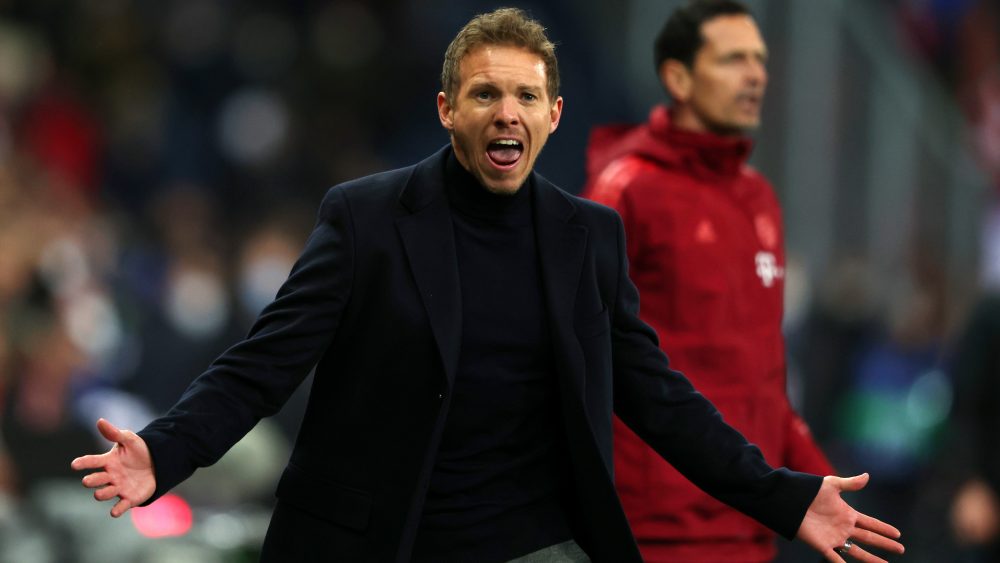FC Bayern Rondo: Preview vs. Fürth and what else happened this week
In the night from Thursday to Friday and during the following day, storm Ylenia had Germany firmly in its grip. In Munich, too, there were several incidents that paralysed parts of the railway network, schools and even the zoo.
At Säbener Straße, the physical wind would not have been needed at all because the metaphorical wind caused enough unrest. First the shaky win against Leipzig, then the 4-2 defeat at Bochum and now a deserved but somewhat fortunate draw in Salzburg due to a rally in the last ten minutes.
“We are not in the flow at the moment,” Joshua Kimmich analysed after the first leg of the UEFA Champions League round of 16. It’s not going effortlessly at the moment. Frequent lapses of concentration, simple ball losses, a fragile defence – Thomas Müller said with regard to the erratic first half that they were “not precise enough in the details”.
Above all, however, the attacker diverted some of the criticism from the defensive players to the offensive. Often it is the defenders who do not look good in retrospect, but on the field the problems start with the attack around Thomas Müller not getting enough “pressure on the ball”, as Julian Nagelsmann called it.
Julian Nagelsmann: “it is not all black”
“Pressure on the ball” – these four words do sound familiar. Hansi Flick already complained at the time that the many goals conceded were due to a lack of pressure on the opponents in possession of the ball. But Nagelsmann also said at the press conference before the Fürth game at the weekend that “it’s important that you remain analytical, remain critical, but don’t throw the baby out with the bathwater as a team or as a coach.”
They still have “three points more than last year at the same time,” said the 34-year-old: “It’s not all black, but it’s not all white either. There are always some shades of grey.” Before Bochum, he said, the world was still all right emotionally, but now the situation was just the way it is.
Nagelsmann allayed all arising worries with his usual smooth aplomb. The problems, however, will accompany him on the pitch for a while. The coach is sure that the goals conceded are “not due to the fact that we defend from the front very high up the pitch and should therefore now switch to a deeper defence or play on the counter-attack.” It’s about “finding a certain balance” and “minimising mistakes in possession”.
Bayern’s build-up play depends on Kimmich
At this point, no further analysis is really needed. Nagelsmann has thus addressed the major stumbling blocks in his current set-up. And he can only counteract them to a limited extent. On the one hand, there is the all-out offensive playing philosophy that Bayern have internalised since Hansi Flick. Nagelsmann has managed to maintain Flick’s penetrating power without, however, relentlessly and unconditionally closing down the opponents at every turn in quite the same way as the team did under his predecessor.
There are still many high ball wins, but at the same time the team tends to maintain a better protection at the back. 25 goals conceded in the Bundesliga are still more than in most of the last few years, but also six fewer than at the same time last season.
However, it is not only a question of philosophy. In addition, the coach’s hands are somewhat tied in terms of available personnel. In the most important positions in build-up play, he can really only rely on Joshua Kimmich – and even he gave up the ball far too often against Bochum (27 ball losses, 76% passing rate) and Salzburg (21 ball losses, 84.5% passing rate).
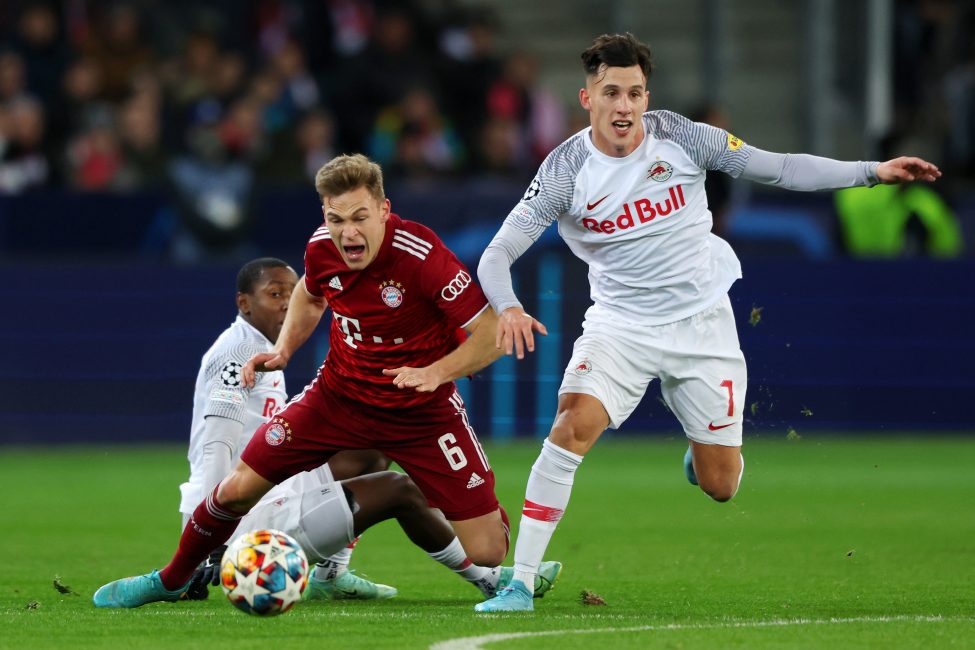
The full throttle Bayern originated with Hansi Flick
In recent weeks, Bayern’s sharpness an accuracy of passing and their ability to be in the right spaces at the right moments has not worked ideally in the early phases of a game and has invited opponents to counterattack. But also in attack the game lacks precision. Bayern take a lot of risk in moving the ball forward at the moment but they are not properly rewarded for this risk.
If there is anything the coach can do, it would be to reduce the tempo, especially when the team is in the lead, or to purposefully have the players move the ball around among themselves for a while in phases when the team lacks control of the game.
Niko Kovač once made a famous comparison that afterwards popped up in almost every Bayern season highlight reel: You can’t expect a car that can only travel comfortably at 100 km/h to go 200 km/h on the motorway. At the moment, however, it looks as if Bayern are only capable of 200 km/h and as if they find it difficult to decelerate.
Its hunger, its desire and its attacking power certainly characterise this team. But especially with a view to the Champions League, Nagelsmann will perhaps have to adjust one or two details in order to be able to find, as he put it, “a certain balance”.
Nagelsmann is not alone to blame for the problems
The coach certainly does not have to turn everything upside down. The squad makes it difficult for him to alleviate the dependence on Kimmich in the centre. Marcel Sabitzer still cannot seem to get going, Corentin Tolisso is not the type of player to take control in wild phases of the game and Marc Roca, despite the praise around the turn of the year, no longer seems to be an option either.
In the defence, moreover, after the departure of David Alaba, no player has yet emerged as the next natural leader. Jerome Boateng recently told Sport1 that this is not absolutely necessary when you are well-rehearsed, but that is precisely what Bayern are not at the back. There is a lack of clear commands, there is no one to bring structure to the often wild defence.
The defensive problems of the Bayern team may start at the front, but they end at the back. As hard as the job of Bayern’s defender is, many of the recent goals conceded have come not when the team was outnumbered or evenly matched but when they had the numerical advantage. In view of the almost €200 million FC Bayern has spent on defensive players alone in recent years, the defensive performance is not satisfactory.
Situation analysis: Salzburg’s goal exposes all of Bayern’s defensive problems in a nutshell
Salzburg’s goal is a perfect example of all the problems mentioned. This goal alone contains everything that Bayern is not doing as well at the moment as it has in other phases of the season.
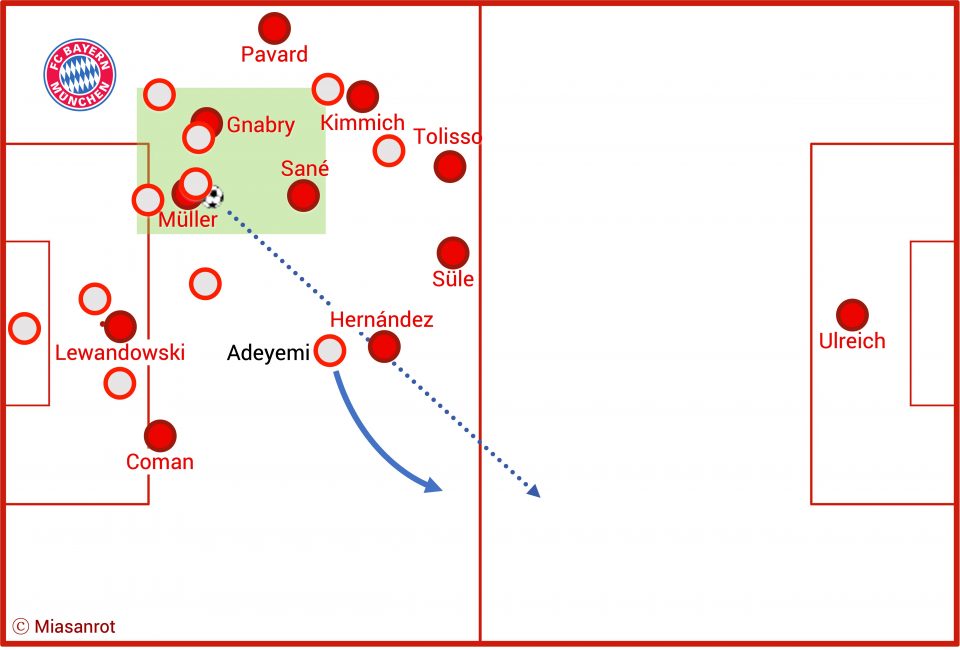
The first action is already decisive. After an own throw-in, Bayern lose the ball. That can happen, but the structure is suboptimal for this to happen for various reasons:
- Müller, Sané and Gnabry are intended to position themselves close to the ball to exert pressure, but do so only half-heartedly. Even if Salzburg do not play the long ball here, the diagonal path to the centre is open. The players should already be positioned from the play before so that they can close the centre immediately if they lose the ball.
- Coman could be positioned a little deeper and more tucked in off the ball. A switch across the pitch is unlikely and he could know that Salzburg will soon force Hernandéz into a 1v1 or even 1v2 situation. However, he reacts too late.
- The three players in the green area have already been mentioned, but Sané in particular is not in a good position here because he can no longer intervene in the action.
- The main culprits are Gnabry and Müller, who despite having equal numbers do not manage to prevent the long ball.
- Even now, however, the situation is still redeemable from Bayern’s point of view. Salzburg themselves are not well enough positioned to exploit the gap in the centre and with Kimmich, Tolisso, Süle and Hernandez, there are basically three and a half players lying in wait in defence. The half player is Kimmich because he is oriented forward and the distance to the back is greater than the illustration above implies.
Only now does the defence come into play. Bayern has a 3v2 superiority at the beginning of the counterattack and here a clear command must now been issued – as Nagelsmann also analysed after the game. One from Süle, who had the whole field in view and is aware of the situation, but also from Tolisso, who has to appraise Süle of his presence in the team’s concerted backward movement.
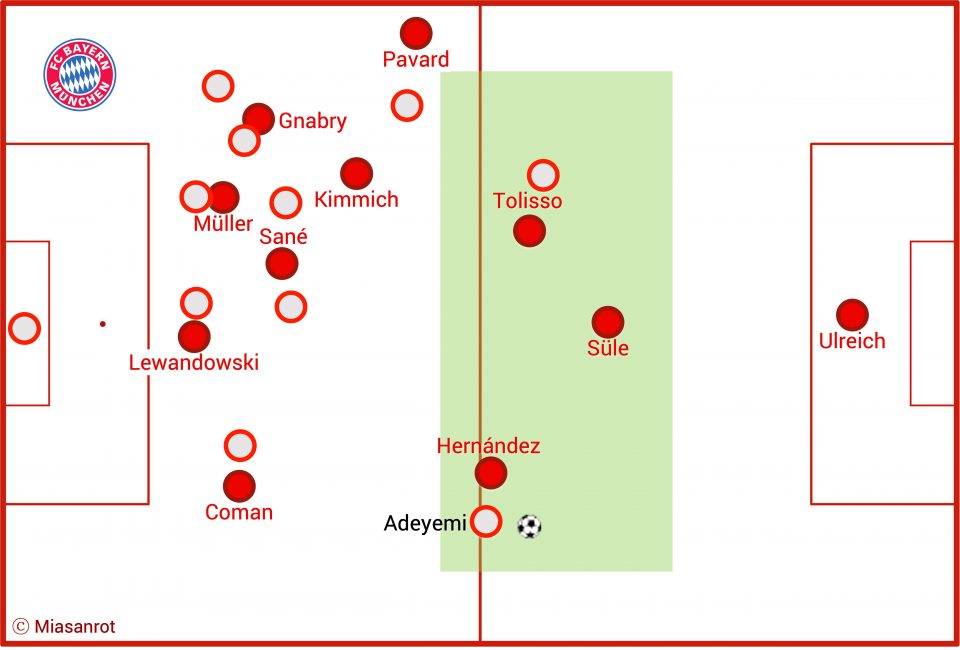
Süle even looks over his shoulder twice and sees his teammate, yet he makes no indication as to shifting to Hernandez’s side. Therefore, the Frenchman probably hesitates, although taking on Adeyemi one-on-one would have been the better option. Instead, Adeyemi moves inside, Tolisso and Süle still do not communicate, which is why the player on the far side of the ball can wriggle free and Salzburg score with a bit of luck on the transition.
Up front, the pressure on the ball is no longer as good as it was for long stretches of the Hinrunde, and at the back there is a lack of coordination – this sums up Bayern’s problems in the current stage of the season.
Bayern’s defence: here’s your shade of grey, Herr Nagelsmann!
Nagelsmann is right to point out, however, that there are shades of grey. The short-term nature of the sport often gives rise to overdramatizing in assessing performances and teams. Bayern have kept a clean sheet seven times this Bundesliga season – twice more than at the same time last season, once fewer than in the whole of last season.
Under Nagelsmann, they concede 1.14 goals and come to an xG-against value of 0.98 per game. In the previous season, these values were 1.29 and 1.21. Bayern also concede one less shot than last year. So you could say that the team has made progress.
However, it is also clear that this small progress in the fast-moving football business, but especially with a super club like FC Bayern, is not enough to placate the environment. The problems described above are too obvious for that and, with a view to the big goal in the Champions League, too much of a threat.
Nagelsmann is still “new” – settling in period?
Nevertheless, a little more grey in the overall assessment would do a world of good. Although Nagelsmann has now had a few weeks in which he could train with the team, training sessions within a season are no substitute for a full summer preparation. Nagelsmann must therefore find compromises in very many areas – the most decisive of which are probably squad planning and tactical setup.
When the 34-year-old was asked about how much he liked the idea of getting new players in January, he became pretty clear: “I’m a big fan of winter transfers. You have many advantages. You mix up the team a bit, challenge the pecking order. Everyone has to prove themselves anew. And above all, you give newcomers six months to get settled. And later, in the summer preparation, they’re there right from the start.”
In a sense, in his first year at Bayern Nagelsmann is also still getting settled. Sure, as a Bayern coach winning titles matters straight away. But the first year is still a time in which mistakes, slip-ups and defeats must be seen as part of the process. Due to the World Cup in winter, the summer break will again be quite short. At least the coach will probably have all the players with him.
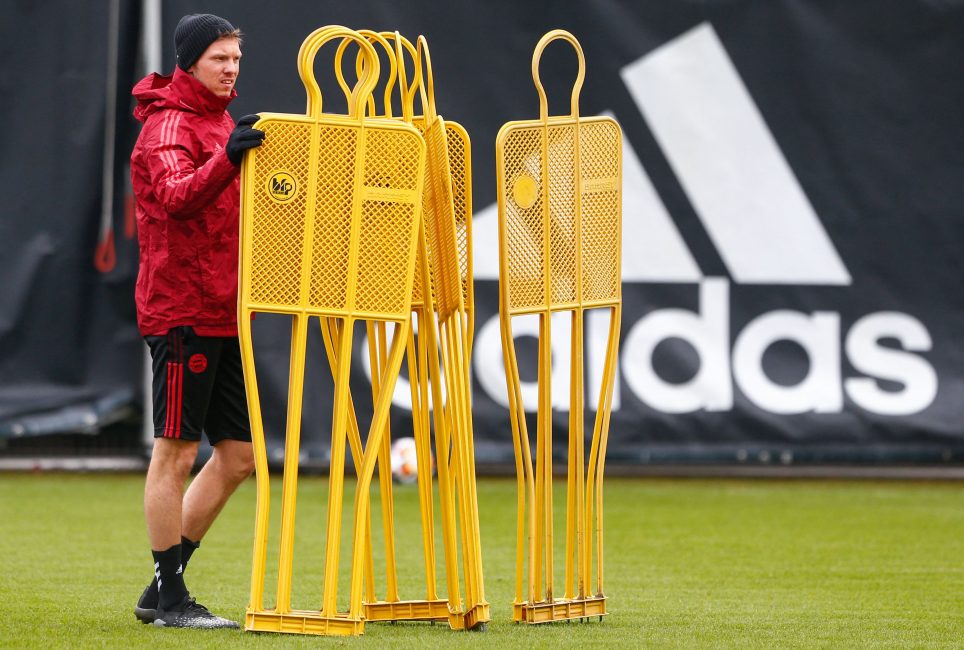
(Photo: MICHAELA REHLE/AFP via Getty Images)
What conclusions will Bayern draw from the current situation?
But let us be honest: If a phase of getting used to life leads to Bayern side once again being on course to finishing with more than 80 points, if they score more goals on average than ever before, then the sharpeness of the criticism that is voiced in many places should definitely be seen as the product of a short-term view.
Admittedly, this does not mean that everything is picture perfect at FC Bayern at present. But things are not all bad for the record champions under Nagelsmann either. Just because the football business itself has become more fast-paced does not mean that processes that have always taken time suddenly run faster.
Nagelsmann, but also FC Bayern as a whole, will have to draw their own conclusions from the current phase. This concerns the tactical orientation, the form of individual players, but also the general structure and quality of the squad. At the same time, they will not base their judgement on three or four games. The business end of the season is just beginning.

